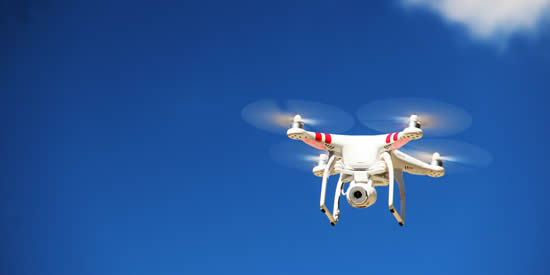| BlueSky Business Aviation News | ||||||||||||||||
|
||||||||||||||||
The technology is developing quickly and better legislation is urgently needed to control the use of drones before a major mid-air catastrophe forces authorities to address the safety aspect. The biggest issue has always been an individual user flying a drone close to an airport, where aircraft are closer to the ground and likely to collide with a drone. Last month a suspected drone struck a British Airways aircraft as it approached Heathrow airport. Although the incident is now not thought to have involved a drone, it demonstrates the need for stricter legislation around airports in general. After all, the effects of a bird being ingested into an aircraft engine are well documented but the impact of a drone striking a propeller blade or helicopter rotor blade is unknown; though likely to be disastrous for smaller business aviation aircraft. Alarmingly though, the number of drone incidents in the UK and worldwide over the past few years demonstrate the enormous capabilities of shop-bought kits and their operator’s lack of awareness. Certain requirements which are enforced in other countries would provide a good basis for progress in terms of drone safety in the UK and Europe. In the US all ‘small unmanned aircraft systems weighing more than 0.55 pounds and less than 55 pounds,’ must be registered. A similar registration system in the UK would allow the government to track and manage drone traffic, removing the anonymity of drone operators and making it easier to enforce regulations.
In Europe, the regulatory framework is fragmented. Basic safety rules apply, such as prohibiting drone use in congested areas, not close to people or property; it must be in line of sight at all times and not flown above 400 feet. And although efforts are being made to educate drone operators about responsible use with video tutorials and information leaflets, there needs to be clearer, enforceable rules to ensure safe operation. There are clear arguments why drones should exist at all. There are a myriad of uses drones can and are being used for ranging from recreational to government. For commercial uses including aerial filming and photography and industrial inspections and surveillance, drones are safer, quicker, less intrusive and more cost effective than more conventional techniques, such as using a helicopter. Rail companies use drones to inspect thousands of miles of rail lines while oil and gas companies find drones useful for inspecting and monitoring offshore rigs, pipelines and storage tanks. In the aviation industry drones can mitigate costs and reduce maintenance times, for example, by inspecting lightening strike damage in a fraction of the time it would take manually. As drones develop, they will become more useful to the business aviation industry and supporting innovation in the market for drones is therefore imperative. What is needed is for companies to work together with the authorities in shaping the operating environment to ensure airspace harmony, especially around airports. The majority of reported incidents are attributed to drone hobbyists and amateurs, often oblivious to potential dangers and unreserved in their operation. For the time being, these drones are often small and lightweight but as technology develops drones will grow in size and number and the danger to aviation, particularly private aviation, will increase accordingly. It would take just one disastrous accident to destroy public confidence and set the whole drone industry back. Acting now is critical to ensure legislation is ahead of drone technology rather than behind it.
If you would like to share your views or comment on this topic, please write to: editor@blueskynews.aero
|
||||||||||||||||


